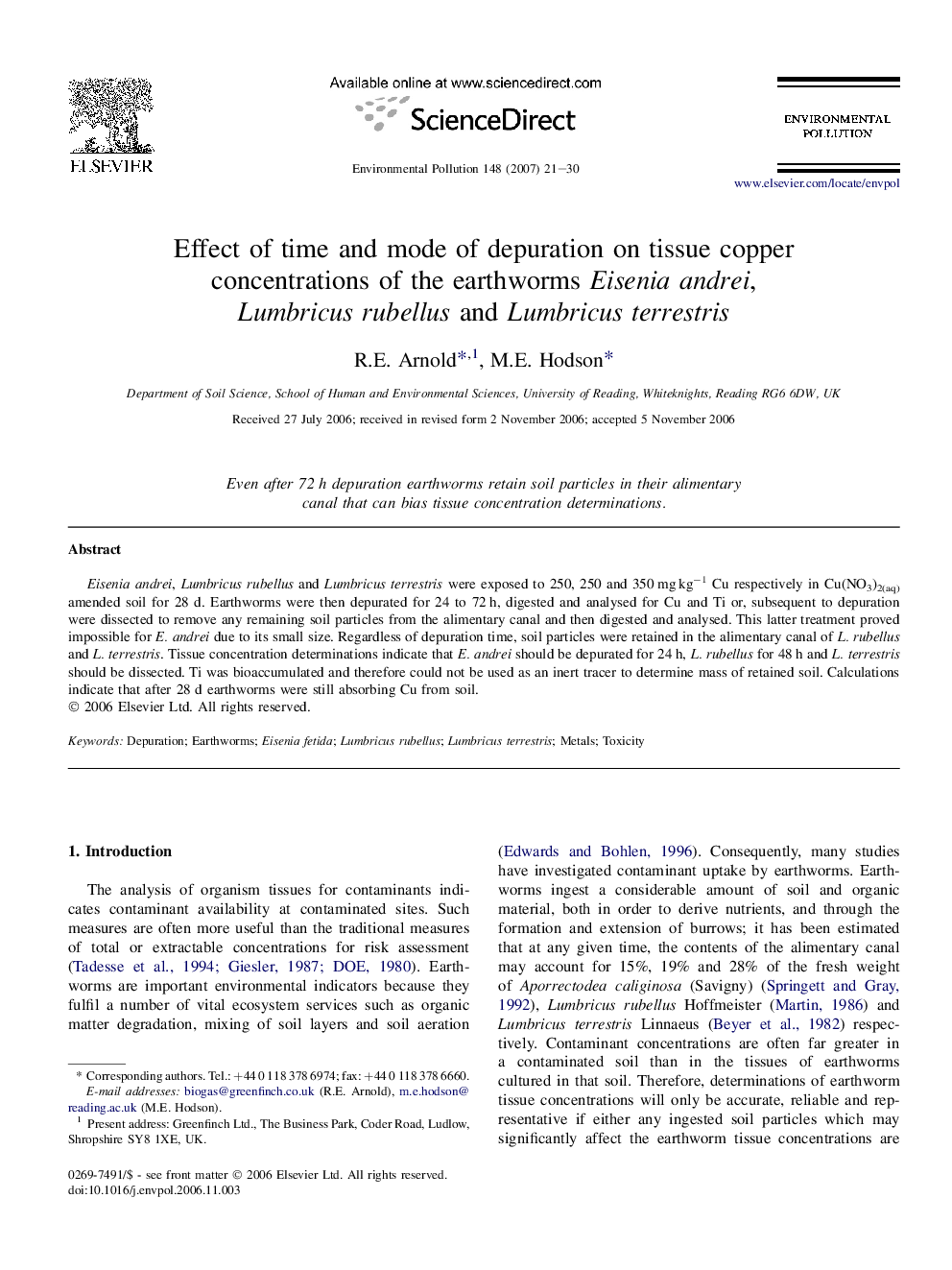| Article ID | Journal | Published Year | Pages | File Type |
|---|---|---|---|---|
| 4427557 | Environmental Pollution | 2007 | 10 Pages |
Eisenia andrei, Lumbricus rubellus and Lumbricus terrestris were exposed to 250, 250 and 350 mg kg−1 Cu respectively in Cu(NO3)2(aq) amended soil for 28 d. Earthworms were then depurated for 24 to 72 h, digested and analysed for Cu and Ti or, subsequent to depuration were dissected to remove any remaining soil particles from the alimentary canal and then digested and analysed. This latter treatment proved impossible for E. andrei due to its small size. Regardless of depuration time, soil particles were retained in the alimentary canal of L. rubellus and L. terrestris. Tissue concentration determinations indicate that E. andrei should be depurated for 24 h, L. rubellus for 48 h and L. terrestris should be dissected. Ti was bioaccumulated and therefore could not be used as an inert tracer to determine mass of retained soil. Calculations indicate that after 28 d earthworms were still absorbing Cu from soil.
